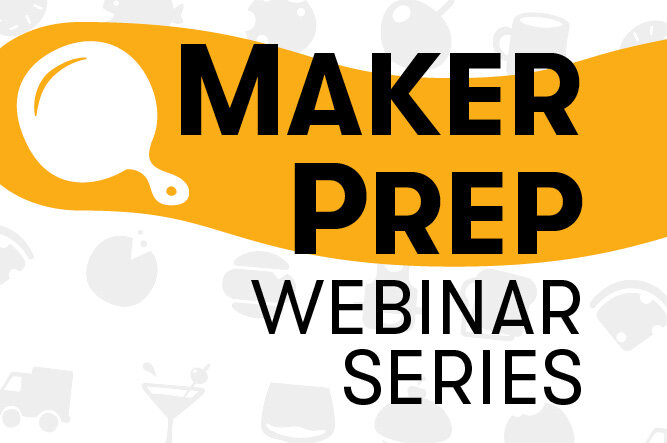“Founding a brand rarely starts with, ‘hey, let’s run a supply chain,’ yet if you don’t, your brand will fail!” cautioned JPG consultant and Pure Organic Founder, Veronica Lehman during Understanding the Supply Chain Continuum, the first webinar of the SFA's series on supply chain, freight, and logistics. She was joined by JPG Ops & Supply Chain Business Partner, Rick Williams. Here’s what you need to know about the key issues surrounding supply chain management, according to Lehman and Williams:
Consider Self-Production versus Contract Manufacturing
Determine if contract manufacturing is right for you by asking yourself: What is the best use of our time? What is the best use of our money? What is our expertise in operations? How do I ensure adherence and existence? and What are my stakeholders comfortable with?
Select the right co-man by asking yourself: Is the co-man an expert at making products like yours? Can the co-man produce the volume you will need to scale your business long term and be profitable? Is your co-man located in the best possible area for your business? and Have you considered reputation and fit for your product?
If you decide to move into a co-man relationship, be sure to know your product, prioritize your needs, and protect yourself, said Lehman.
Product Ingredient Requirements
Ingredient type, supply, and ability to use ingredients in food are important factors in sourcing and planning, said Lehman. She suggested considering if your product ingredients are widely available, GRAS designated, and the specifications needed for the individual ingredients. She added that the cost and priority of certifications (Q&A Compliance), MOQ’s, shelf life, and production volumes matter too.
Inventory Management and Planning
According to Lehman, proper management requires three things: a strong knowledge of items with the most impact on inventory, ability to project demand, and using tools to improve the planning process like a bill of materials and supply chain dashboard.
If you know your cash, have strong process, focus on forecast, and invest in people, you can successfully manage and plan your inventory better, Lehman advised.
Freight and Logistics Management
As you grow, you want to optimize at every step for cost and time. Lehman said the major things to consider include how much you can produce, how long it can stay in your manufacturing plant, what you are getting charged for it to stay there, and how often do you have to move it?
She offered the following things to think about: Locations should optimize freight expenses, distribution points should be in the center, the tighter the network, the less cost incurred, volume can exponentially increase or decrease cost, and plan 3–5-year projections.
Cost and Margin Management
Knowing the inputs to your final COGS number is key to effective cost management. Lehman encouraged makers to think about manufacturing and raw materials, packaging and shipping, and distribution costs.
Maximizing gross margin requires managing risks and understanding trade-offs, Lehman said. Understanding the balance between inventory, production, MOQs, how long you keep ingredients around, how much packaging you actually need, and location as you grow, is key, she said.
Ultimately, one’s supply chain must be monitored and managed as a company grows. Now is the most complicated time most of us have seen in supply chain history, acknowledged Williams. If you can overcome this challenge properly, you will set yourself up for success in the future no matter what comes your way, he said.
If you’d like to watch the full session recording and hear real industry examples from Williams and Lehman, you may do so here. Additionally, you can register for the second webinar of this series, Solutions for a Troubled Supply Chain, here.
Related: SFA Readies for December Webinars; Buyers' Picks: Special Salsas.

